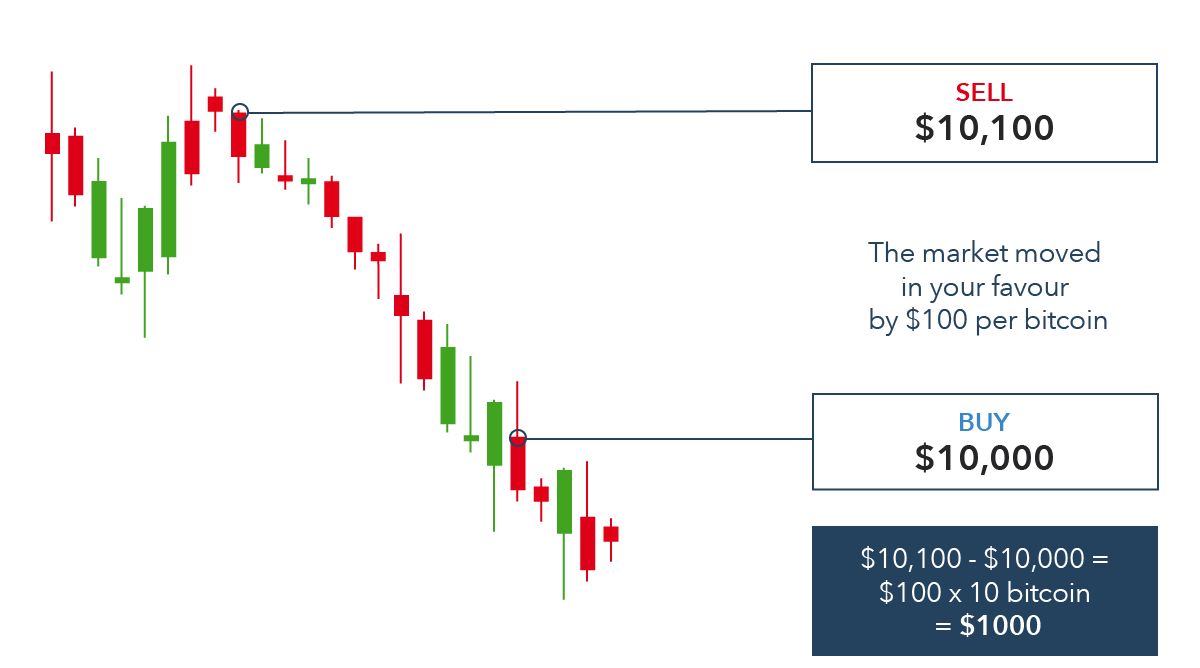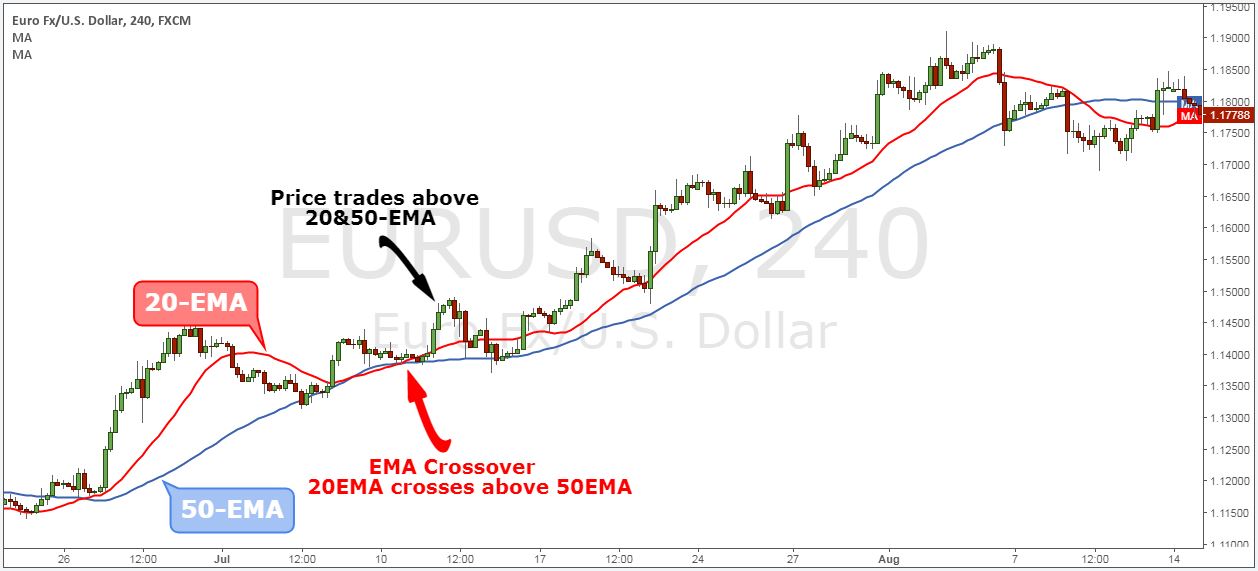Introduction
When it comes to trading in the financial markets, investors have two primary options: going long or going short. These terms might sound complex to those new to trading, but they are integral to understanding how markets work and how individuals can profit from them.
In this article, we will delve into the concepts of long and short positions in trading. We will explore what these terms mean, the key differences between them, and the benefits and risks associated with each strategy. Whether you are a seasoned trader looking to polish your knowledge or a beginner eager to understand the basics, this article will provide valuable insights.
Before we dive into the intricacies of long and short positions, let’s take a moment to understand that trading involves speculating on the future price movement of an asset, be it a stock, commodity, or currency. Traders buy and sell these assets in the hope of profiting from price fluctuations.
Now, let’s explore the fascinating world of long and short positions and discover how they can help traders capitalize on their predictions.
Understanding Long and Short Positions
Before we delve into the key differences between long and short positions, it is important to grasp the basic concepts. In trading, a long position refers to buying an asset with the expectation that its price will rise, allowing the trader to sell at a higher price and make a profit. On the other hand, a short position involves selling an asset that you do not own, with the intention of buying it back at a lower price in the future.
Let’s take a closer look at both long and short positions to better understand how they work.
Long Position
A long position is perhaps the most common and straightforward trading strategy. In a long position, the trader believes that the asset’s value will increase over time. They buy the asset at a specific price and hold on to it until its value rises. Once they are satisfied with the profit potential, they sell the asset at a higher price than what they initially paid, making a profit.
For example, let’s say you believe that the shares of Company XYZ are undervalued and primed for growth. You decide to enter into a long position by purchasing 100 shares at $50 per share. After a few months, the price of the shares rises to $70 per share, validating your prediction. You then sell the shares, gaining a profit of $20 per share.
Short Position
Unlike a long position, a short position involves a different approach to trading. When taking a short position, a trader sells an asset that they do not own, with the expectation that its price will decrease. Once the price declines, they buy back the asset at a lower price and return it to the lender, pocketing the difference as profit.
Let’s illustrate this with an example. Suppose you believe that the shares of Company ABC are overvalued and are likely to decline in the coming weeks. You enter into a short position by selling 100 shares borrowed from a broker at $80 per share. As predicted, the company faces challenges, and the stock price drops to $60 per share. At this point, you buy back the shares for $60 each and return them to the broker, thus earning a profit of $20 per share.
Both long and short positions have their own unique profit potential and risk factors, as we will explore in the following sections. Understanding these differences is crucial for traders to make informed decisions and manage their portfolios effectively.
Long Position
A long position in trading refers to the act of buying an asset with the expectation that its price will increase over time. It is a bullish strategy that involves purchasing an asset at a certain price and holding it in the hopes of selling it at a higher price to make a profit.
How Does a Long Position Work?
When entering a long position, a trader believes that the market or specific asset is undervalued and has the potential for future growth. They buy the asset, such as stocks, commodities, or currencies, at the prevailing market price and hold onto it until the price increases. The goal is to sell the asset at a higher price than what they paid, realizing a profit.
For instance, let’s consider a scenario where you believe that the price of gold will rise due to increasing demand. You decide to take a long position by purchasing an ounce of gold at $1,500. Over time, the demand for gold increases, and its price per ounce rises to $1,800. You can then sell your gold, making a profit of $300 per ounce.
Benefits of Going Long
Going long has several benefits for traders. Firstly, it allows investors to participate in the upward movements of the market. By holding onto an asset for an extended period, traders can benefit from potential price appreciation and capitalize on market trends.
Secondly, going long provides the opportunity for passive income through dividends and interest payments. Certain assets, such as stocks, may pay dividends to shareholders regularly. By owning these assets in a long position, traders can receive a portion of the company’s profits as dividend payments.
Thirdly, going long can provide a sense of security and stability for investors. When you believe in the long-term growth potential of an asset or the overall market, choosing a long position allows you to hold onto your investments without constantly monitoring short-term fluctuations.
Risks of Going Long
While going long can be profitable, it is essential to be aware of the potential risks involved. One significant risk is the possibility of the asset’s value depreciating instead of appreciating. If the market or specific asset experiences a downturn, investors could face losses if they sell the asset at a lower price than what they initially paid for it.
Additionally, going long ties up capital in the asset, limiting the opportunity to invest in other potentially profitable ventures. The longer the investment is held, the longer the capital remains tied up and potentially unavailable for other trading opportunities.
Furthermore, unforeseen events, such as economic crises or geopolitical issues, can impact the value of assets. To mitigate these risks, it is crucial for investors to conduct thorough research, diversify their portfolios, and carefully monitor market trends when taking long positions.
In summary, a long position involves buying an asset with the expectation of price appreciation over time. It allows traders to benefit from upward market movements, generate passive income, and maintain a sense of stability in their investments. However, it comes with risks, including the potential for price depreciation and tying up capital. By carefully assessing these factors, traders can make informed decisions and enhance their chances of successful long-term investments.
Short Position
While a long position involves buying an asset with the expectation of price appreciation, a short position takes the opposite approach. When taking a short position, traders sell an asset that they do not own, anticipating that its price will decrease. This strategy allows traders to profit from falling prices and is often used in bearish market conditions.
How Does a Short Position Work?
When entering a short position, traders borrow assets from a broker or another party and immediately sell them on the market at the prevailing price. They aim to buy back the same assets at a lower price in the future, return them to the lender, and pocket the difference in price as a profit.
For example, let’s say you believe that the shares of Company XYZ are overvalued and will likely decline in the coming months. You borrow 100 shares from your broker and sell them on the market at $50 per share. Later, the price drops to $40 per share, and you decide to buy back the shares. You return the 100 shares to the broker and pocket the $10 per share difference.
Benefits of Going Short
Short positions offer several benefits for traders. Firstly, they provide the opportunity to profit from declining markets. While most investors may incur losses during bearish conditions, short positions allow traders to take advantage of falling prices and generate profits in a downtrend.
Secondly, short positions allow traders to hedge their portfolios. By taking short positions on certain assets or markets, traders can offset potential losses on their long positions. This can help protect their overall portfolio value during periods of market volatility.
Lastly, short positions offer flexibility and the ability to move quickly. Unlike long positions, which require capital to purchase assets, short positions involve selling borrowed assets, allowing traders to take advantage of market opportunities without tying up their own capital.
Risks of Going Short
While short positions can be profitable, they come with inherent risks. One significant risk is the potential for unlimited losses. Unlike long positions, where the maximum loss is limited to the initial investment, short positions can lead to substantial losses if the price of the borrowed asset increases significantly.
Another risk is the possibility of a short squeeze. A short squeeze occurs when a heavily shorted asset starts to rise in price, forcing short sellers to buy back the shares at higher prices to limit their losses. This increased buying pressure can further drive up the asset’s price, causing even more losses for short sellers.
Furthermore, shorting stocks or certain assets may involve borrowing costs, as traders need to pay interest on the borrowed assets. Additionally, not all assets can be easily borrowed for short selling, limiting the availability of shorting opportunities for some traders.
It is important for traders to carefully monitor their short positions, set stop-loss orders to manage potential losses, and stay informed about market trends and news that could impact the value of the asset being shorted.
In summary, a short position involves selling borrowed assets with the anticipation of buying them back at a lower price in the future. It offers traders the opportunity to profit from falling prices, hedge their portfolios, and trade with flexibility. However, it comes with risks, including potential unlimited losses, short squeezes, and borrowing costs. By understanding these risks and implementing risk management strategies, traders can effectively utilize short positions in their trading strategies.
Key Differences Between Long and Short Positions
While both long and short positions are integral to trading, they differ in terms of strategy, profit potential, and risk. Understanding the key differences between these two positions is essential in making informed trading decisions. Let’s explore these differences:
Profit Potential:
Long Position: A long position offers profit potential through price appreciation. Traders purchase assets at a lower price and aim to sell them at a higher price, generating profit from rising market trends.
Short Position: A short position provides profit potential through price depreciation. Traders sell borrowed assets at a higher price, buy them back at a lower price, and pocket the difference, capitalizing on falling market trends.
Market Outlook:
Long Position: Going long is a bullish strategy, indicating a positive outlook on the market or a specific asset. Traders believe that the asset’s value will increase over time and price fluctuations will be in their favor.
Short Position: Going short is a bearish strategy, indicating a negative outlook on the market or a specific asset. Traders anticipate that the asset’s value will decline and aim to profit from falling prices.
Asset Ownership:
Long Position: When going long, traders purchase and own the assets they believe will appreciate in value. They have full ownership rights, including the ability to receive dividends or interest payments associated with the assets.
Short Position: In contrast, short sellers do not own the assets they sell. They borrow the assets from a lender, sell them on the market, and then buy them back at a later stage to return to the lender. Short sellers do not benefit from dividends or interest payments associated with the assets.
Risk Profile:
Long Position: The main risk of going long is the potential for the asset’s value to decline instead of appreciating, resulting in losses if the trader sells the asset at a lower price. However, the maximum loss is limited to the initial investment made when purchasing the asset.
Short Position: Short positions carry a higher risk as the potential losses are theoretically unlimited. If the price of the borrowed asset increases significantly, short sellers may face significant losses. Additionally, short positions are vulnerable to short squeezes, where rising prices force short sellers to buy back the assets at higher prices to cover their positions.
Timing and Flexibility:
Long Position: Going long typically requires a longer-term outlook, as traders aim to benefit from price appreciation over time. Long positions tie up capital, limiting the flexibility to invest in other opportunities while the asset is held.
Short Position: Short positions provide the flexibility to take advantage of falling prices quickly. Traders can enter and exit positions more rapidly, allowing for potential profits in a shorter time frame. This flexibility also enables traders to hedge their portfolios against potential losses.
Understanding these key differences is crucial for traders to assess their risk tolerance, market outlook, and investment objectives. By carefully considering these factors, traders can make more informed decisions and tailor their trading strategies accordingly.
Benefits of Going Long
Going long, or taking a long position in trading, offers various benefits for investors. This strategy involves buying an asset with the expectation that its price will increase over time. Let’s explore some of the advantages of going long:
Profit from Price Appreciation:
One of the primary benefits of going long is the opportunity to profit from price appreciation. By purchasing assets at a lower price and holding onto them, traders can capitalize on upward market movements and sell the assets at a higher price, generating a profit.
Participation in Market Growth:
Going long allows investors to participate in the growth of the market or specific asset. As economies and industries evolve and expand, asset values may increase over time. By adopting a long-term perspective, traders can reap the benefits of overall market growth and enjoy potential returns.
Passive Income through Dividends:
Many assets, such as stocks, have the potential to provide passive income through dividends. When holding shares in a company, investors may receive regular dividend payments based on the company’s profits. Going long allows traders to receive these dividend payments, leading to additional income and enhancing overall returns.
Reduced Portfolio Volatility:
By going long and holding assets for an extended period, investors can achieve a more stable and less volatile portfolio. Short-term market fluctuations often iron out over time, and long positions can benefit from overall market trends. This stability can provide peace of mind and reduce the stress associated with constant trading and monitoring of positions.
Stake in Company Ownership:
Going long in stocks provides investors with a stake in the ownership of the underlying company. Holding shares in a company means having a voice in company decisions, attending shareholder meetings, and voting on important matters. This ownership aspect can give investors a sense of involvement and the potential to benefit from the company’s success.
Potential for Asset Appreciation:
While going long is commonly associated with buying stocks, it applies to other asset classes as well. Real estate, commodities, and currencies are among the many assets in which investors can take long positions. These assets have the potential to appreciate over time, offering opportunities for profitable returns.
In summary, going long in trading offers several benefits. It enables traders to profit from price appreciation, participate in market growth, receive passive income through dividends, reduce portfolio volatility, have a stake in company ownership, and take advantage of potential asset appreciation. However, traders must carefully assess the risks associated with going long and conduct thorough research before making investment decisions.
Risks of Going Long
While going long in trading offers various benefits, it is essential to be aware of the associated risks. Understanding and managing these risks is crucial for investors to make informed decisions and protect their portfolios. Let’s explore some of the risks of going long:
Price Depreciation:
One of the primary risks of going long is the potential for price depreciation. Despite investors’ expectations of an asset appreciating over time, there is always a chance that the value of the asset may decline. If the market conditions or specific factors negatively impact the asset’s value, investors may incur losses if they sell the asset at a lower price than what they initially paid.
Market Volatility:
Financial markets are subject to volatility, with prices fluctuating due to various factors such as economic events, geopolitical tensions, and changes in market sentiment. These fluctuations can cause significant price swings, impacting the value of the assets held in long positions. Extreme market volatility can lead to unexpected losses or reduced profitability for investors.
Limited Capital Availability:
When going long, investors tie up their capital in the assets they purchase. This limits the availability of capital for other investment opportunities that may arise. It is important for investors to consider their capital allocation and ensure they have enough liquidity to seize potential profitable ventures or address immediate financial needs.
Opportunity Cost of Capital:
The opportunity cost of capital is another risk associated with going long. When investors hold assets in a long position, they forgo the potential gains that could have been achieved by investing that capital elsewhere. If alternative investment opportunities yield higher returns, investors may experience an opportunity cost by not allocating their capital to those more lucrative options.
Market Uncertainty and Economic Factors:
Market uncertainty and economic factors can significantly impact the value of assets held in long positions. Changes in government policies, economic downturns, recessions, or industry-specific events can create volatility and potential losses for investors. It is crucial to stay informed about the market landscape, monitor economic indicators, and consider the potential impact on the assets held in long positions.
Lack of Diversification:
By going long on specific assets, investors concentrate their investments in those particular assets. This lack of diversification can expose investors to higher risk as the performance of their portfolio becomes heavily dependent on the success of those individual assets. A downturn in the market or poor performance of those specific assets can result in significant losses.
In summary, going long in trading comes with its inherent risks. Investors must be aware of the potential for price depreciation, market volatility, limited capital availability, opportunity cost of capital, market uncertainty, and lack of diversification. It is crucial to assess and manage these risks effectively by conducting thorough research, diversifying portfolios, setting realistic expectations, and implementing appropriate risk management strategies.
Benefits of Going Short
Going short, or taking a short position in trading, offers several benefits for investors. This strategy involves selling an asset that you do not own, with the expectation that its price will decrease. Let’s delve into some of the advantages of going short:
Profit from Price Depreciation:
One of the primary benefits of going short is the ability to profit from price depreciation. By selling borrowed assets at a higher price and buying them back at a lower price, traders can pocket the difference as profit. Going short allows investors to capitalize on downward market trends and generate returns when prices decline.
Hedging Possibilities:
Short positions provide a unique benefit of hedging against potential losses in a portfolio. Traders can take short positions on specific assets or markets as a way to offset potential losses on their long positions. This hedging strategy helps protect overall portfolio value during volatile market conditions or adverse market movements.
Flexibility and Quick Profit Opportunities:
Short positions offer flexibility and the ability to take advantage of quick profit opportunities. Unlike long positions that require purchasing assets, short positions involve selling borrowed assets, allowing traders to enter and exit positions more rapidly. This flexibility enables traders to capitalize on short-term market movements and potentially generate profits in a shorter time frame.
Expanding Profit Potential:
With a long position, the profit potential is typically limited to the difference between the purchase price and the eventual sale price. However, with a short position, the profit potential can be expanded, as there is no theoretical upper limit on how much an asset’s price can decline. This feature allows traders to potentially capture larger returns when prices move significantly downwards.
Portfolio Diversification:
Short positions offer an additional tool for portfolio diversification. By incorporating short positions in a portfolio, traders can benefit from both upward and downward market movements, reducing the overall correlation and risk exposure of their investments. This diversification can help cushion potential losses in one part of the portfolio with gains in another.
Risk Management:
Short positions can serve as a risk management tool in a trader’s arsenal. By actively identifying assets or markets that are overvalued or experiencing downward pressure, traders can proactively take short positions to mitigate potential losses. This active risk management approach allows traders to adjust their positions in response to changing market conditions.
In summary, going short in trading offers several benefits. It allows traders to profit from price depreciation, provides hedging possibilities, offers flexibility and quick profit opportunities, expands profit potential, enables portfolio diversification, and serves as a risk management tool. However, it is important for traders to carefully assess the risks involved and to implement proper risk management strategies when executing short positions.
Risks of Going Short
While going short in trading offers certain benefits, it also comes with inherent risks that traders need to be aware of. Understanding and managing these risks is crucial to making informed investment decisions. Let’s explore some of the risks associated with going short:
Potential for Unlimited Losses:
One of the main risks of going short is the potential for unlimited losses. Unlike going long, where the maximum loss is limited to the amount invested, going short involves selling borrowed assets that may rise significantly in price. In such cases, short sellers are obligated to buy back the assets at higher prices, leading to potential substantial losses.
Short Squeeze:
A short squeeze is a phenomenon that can occur when there are a large number of short sellers in a specific asset, and the price of the asset begins to rise. Short sellers may be forced to buy back the assets at higher prices to close their positions, driving the price even higher. This can result in significant losses for short sellers and market volatility.
Borrowing Costs:
When going short, traders typically borrow the assets from a broker or another party. This borrowing process incurs interest or borrowing costs that need to be paid by the short sellers. The costs associated with borrowing the assets can eat into potential profits, reducing overall returns.
Limited Profit Potential:
Unlike going long, where the profit potential can be significant, going short has a limited profit potential. While prices can decline substantially, they cannot fall below zero. Therefore, short sellers may find that the profit potential is capped compared to the potentially unlimited gains possible with long positions.
Margin Calls and Forced Liquidation:
When short selling, traders must maintain a sufficient margin to cover potential losses. If the price of the borrowed asset rises significantly, the trader may receive a margin call from the broker, requiring additional funds to maintain the position. Failure to meet the margin call may result in forced liquidation of the short position, potentially leading to substantial losses.
Market Volatility and Uncertainty:
Short selling is more challenging in volatile markets and uncertain economic conditions. Market sentiment can quickly change, and unexpected events may impact the prices of assets. These factors can increase the risk of losses for short sellers and make it difficult to accurately predict price movements.
To mitigate these risks, traders should conduct thorough research, carefully select the assets to short, implement risk management strategies, set stop-loss orders to limit potential losses, and consider diversifying their portfolio to reduce exposure to any single asset or market.
In summary, going short in trading carries risks, including the potential for unlimited losses, short squeezes, borrowing costs, limited profit potential, margin calls, and market volatility. Traders must be knowledgeable, vigilant, and prepared to manage these risks to navigate the complexities of short selling effectively.
Factors to Consider When Deciding Between Long and Short Positions
Deciding between long and short positions in trading requires careful consideration of various factors. These factors can influence the trading strategy and align it with an investor’s goals, risk tolerance, and market outlook. Here are some key factors to consider when deciding between long and short positions:
Market Analysis and Outlook:
Begin by analyzing the market and the specific asset you are considering. Evaluate the current market conditions, historical price trends, and any relevant news or events that may impact the asset’s value. This analysis will help you determine whether the market is likely to experience upward or downward trends, guiding your decision between a long or short position.
Investment Horizon and Timeframe:
Consider your investment horizon and timeframe. If you have a long-term investment goal and believe in the potential for price appreciation, a long position may be suitable. However, if you have a shorter timeframe and anticipate a decline in the asset’s value, a short position might be more appropriate. Align your strategy with your desired investment timeframe to maximize your chances of achieving your goals.
Risk Appetite:
Evaluate your risk tolerance and appetite for volatility. Long positions typically offer lower immediate risks, but they are subject to potential market downturns. Short positions, on the other hand, involve higher risks but can be profitable in downward market trends. Assess your risk tolerance and decide on a position that aligns with your comfort level to appropriately manage potential risks.
Availability of Borrowed Assets:
For short positions, consider the availability of borrowed assets. Short selling requires borrowing assets to sell, and certain assets may have limited availability for shorting. Ensure that there is sufficient liquidity in the market for the assets you are considering to enable smooth execution of your short positions.
Market Volatility and Risks:
Assess the market volatility and risks associated with both long and short positions. Consider the potential for price volatility, unexpected events, and market sentiment. Evaluate the specific risks associated with each position and determine which risks you are better equipped to manage effectively.
Diversification and Portfolio Management:
Consider the overall diversification of your investment portfolio. Long positions can provide stability and participation in market growth, while short positions offer the potential to hedge against market downturns. Assess how each position aligns with your portfolio objectives and consider the optimal balance between long and short positions to mitigate risks and achieve diversification.
By carefully considering these factors, conducting thorough research, and staying informed about market trends, investors can make more informed decisions when choosing between long and short positions. Remember that there is no one-size-fits-all approach, and adapting your strategy based on market conditions and personal circumstances is key to successful trading.
Conclusion
Understanding the concepts of long and short positions in trading is essential for investors to navigate the financial markets successfully. Making informed decisions between these positions requires careful consideration of various factors, such as market analysis, investment horizon, risk appetite, availability of borrowed assets, market volatility, and portfolio diversification.
Going long provides the opportunity to profit from price appreciation, participate in market growth, receive passive income through dividends, and maintain a sense of stability. However, it comes with the risk of price depreciation, market volatility, limited capital availability, and opportunity cost of capital.
On the other hand, going short offers the potential to profit from price depreciation, hedge against downside risks, take advantage of quick profit opportunities, and expand profit potential. However, it carries risks such as unlimited losses, short squeezes, borrowing costs, limited profit potential, and market volatility.
When deciding between long and short positions, investors should carefully assess the current market conditions, conduct thorough research, factor in their risk tolerance, consider their investment timeframe, and evaluate the availability of borrowed assets. Additionally, maintaining a well-diversified portfolio and regularly monitoring market trends and economic indicators can help manage risks effectively.
Ultimately, the choice between long and short positions depends on individual circumstances, market analysis, and risk appetite. Adapting strategies to evolving market conditions and continuously educating oneself about trading principles are crucial for sustained success in the ever-changing world of finance.

























